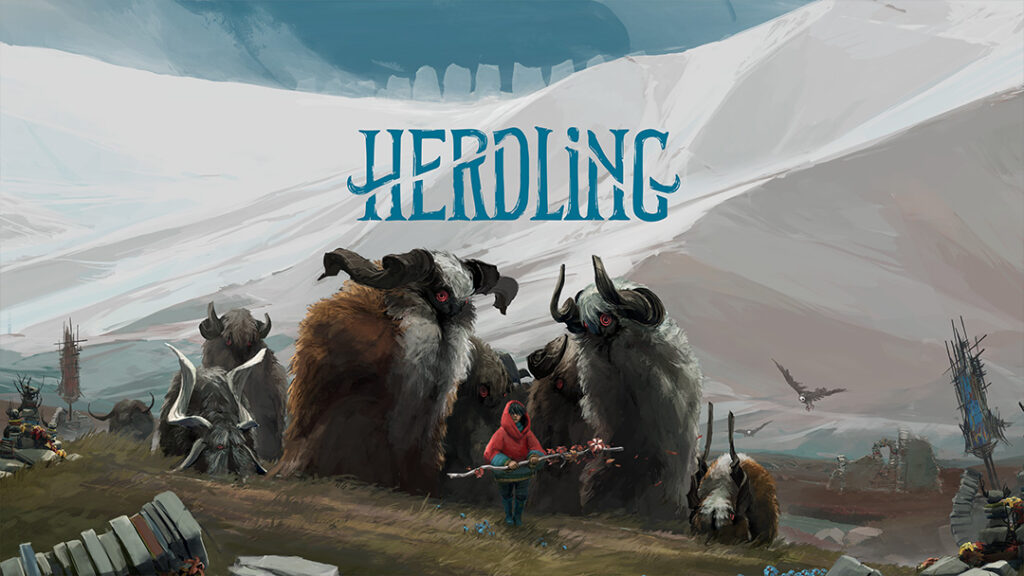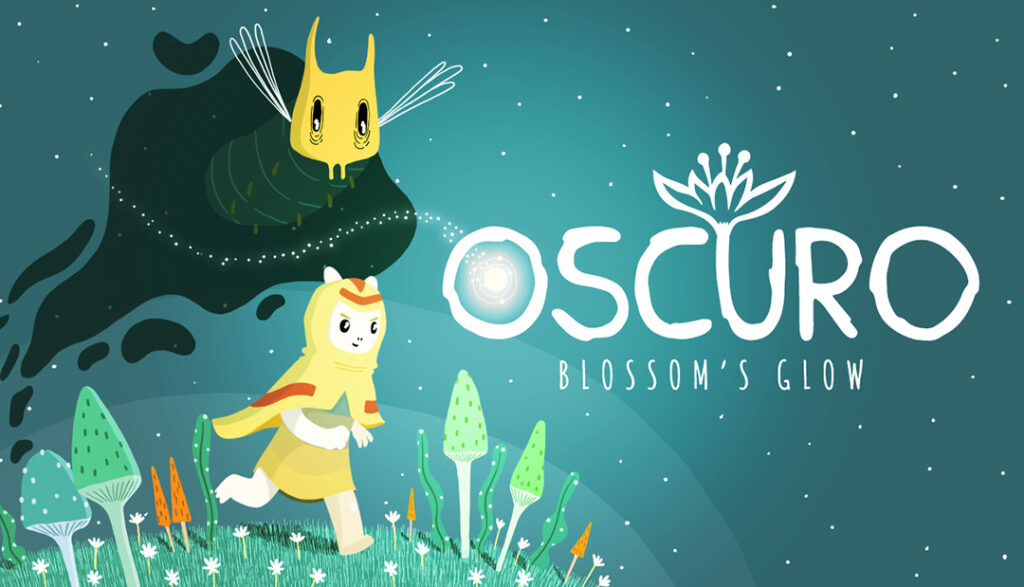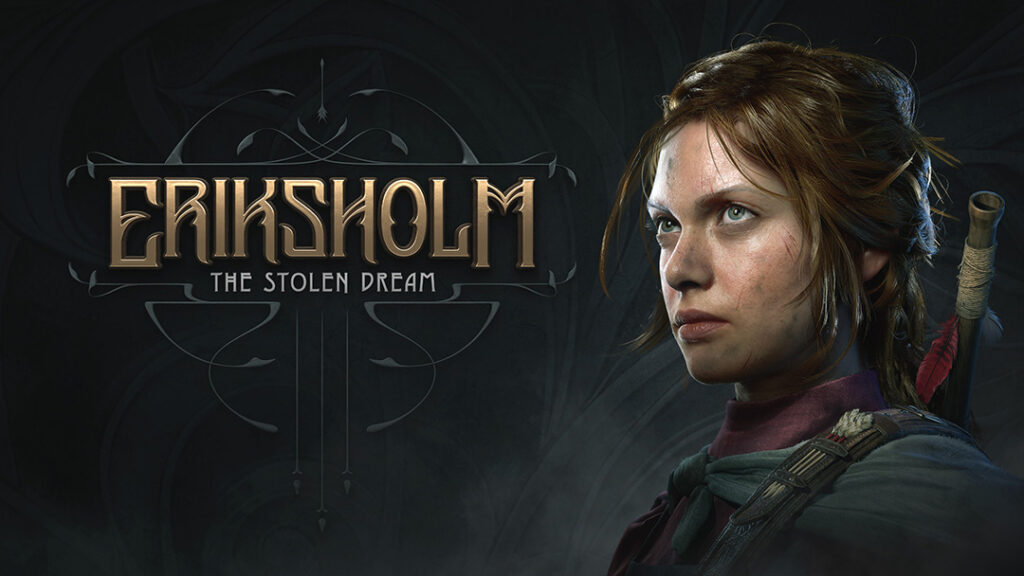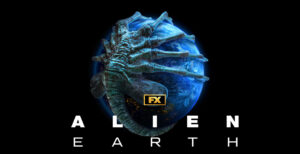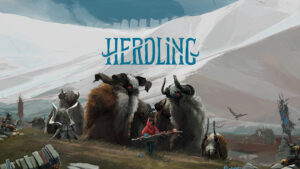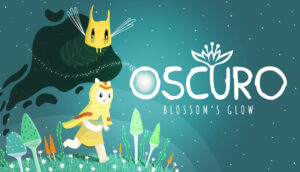(This article contains major spoilers)
There’s so much to say about the Death Stranding games. Beyond the entertainment, there’s always so many things Hideo Kojima added one way or another. Death Stranding 2: On The Beach is a clever concentration of pop culture and social commentary indulging in the absurd, so much is happening for those who have the right references. I have to say, I’m sure I missed many of them, but the entire game is a love letter to cinema, video games, music, and people.
Falling back into this world six years later has the same flavor, enhanced by breathtaking graphics, and this time on Woodkid‘s music and new tracks to discover along the way. Sam Porter Bridges (Norman Reedus) is back in the wilderness to save the world, one delivery at a time.
Death Stranding has been a strange, strange journey. Video games have the ability to be multidimensional, to play on different levels. We’re used to that but with the Death Stranding games, there’s such a cultural dialogue with the player that leaves no one without their opinion. Now, it’s a game that really reflects Kojima’s culture and taste, from the music to the movie references and other tributes more or less subtle. There’s also all these cameos from creative people he digitalized into his games, immortalizing their likeness in a made-up world. And this is what makes these games so unique: the serious and desperate tone of the story meets with well-known faces and names in a strange dance between saving the world and dancing with a puppet in an hot spring on an old Japanese pop song. These are not serious games set in a very serious world. You like it or hate it.
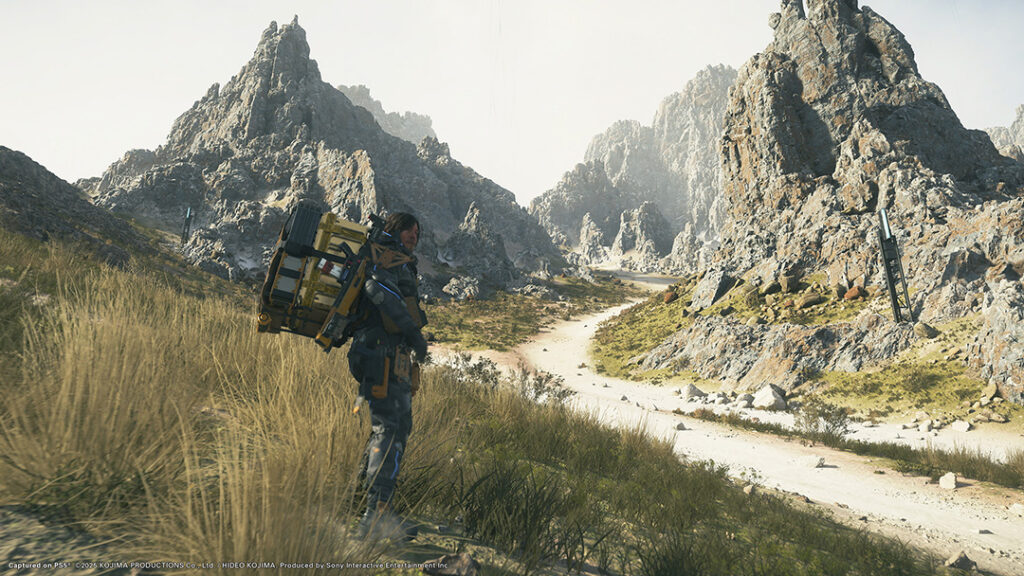
We Are Part of This World, Not Ruling It
Way beyond the “walking simulator”, as some people like to call it, and beyond its silliness, Death Stranding 2 tackles several very real and current topics that are actual concerns all over our world. The most obvious one is human connection, or the lack of. In Death Stranding, people live hidden underground, safe from a hostile world where death is often invisible until the last moment. If the BTs are a new threat on the scale of humanity, this is not the only one. Humans, true to themselves, and groups of brigands are terrorizing the surface. In this global context, people lost the ability to travel and communicate in person between places, they lost socialization outside of their immediate community of survivors. In Death Stranding 2, this is also very clearly the purpose of Higgs (Troy Baker), the main antagonist: make it so humans are confined, caged. He won’t kill them but would let them wither. His goal is not to kill. He wants to let humanity go extinct by suffocating the species.
This lack of human connection is a sort of torture on a species-wide scale, not unlike what humans do to cattle, but could also be seen as an extrapolation of our future and the way a handful of people is trying to replace with AI how creativity and arts connect people, and the emotions that are born from it. Higgs is not human, he’s not dead either, he’s something else, a new form of life more advanced, that gained its own freewill, a will to survive, to dominate in a world they don’t want to share with humans. He also turned himself into a sort of icon, not unsimilar to a religious one, up to the crusade against “the other” and viewing himself as a sort of God.
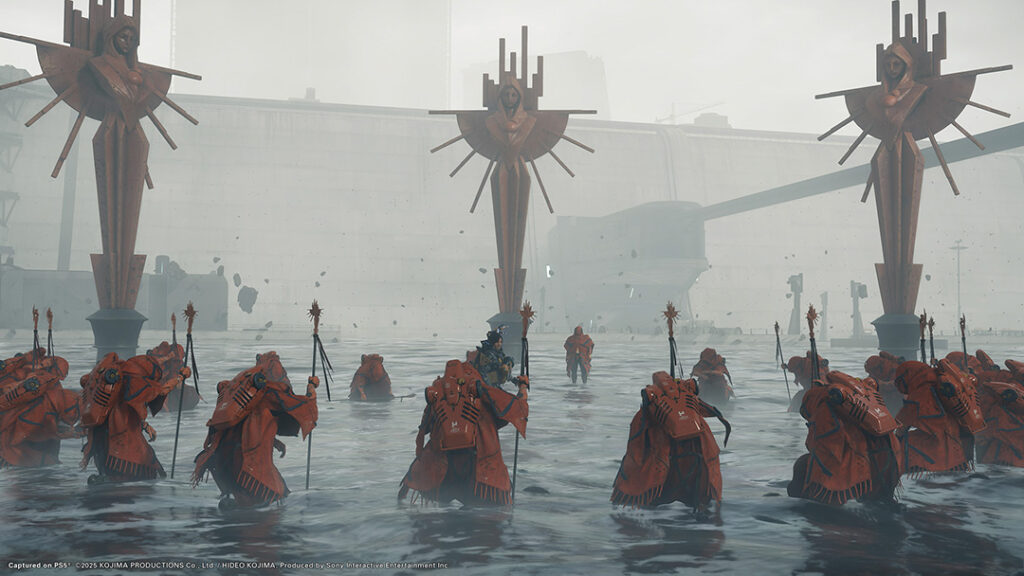
The fact that Sam (who can’t die) has to fight to reconnect people, to recreate this human link, to open everyone to the world again, is, to me, a lover letter to our human social nature. It’s also a tribute to all living beings and what’s left of us after we leave, a tribute to the soul, to the magic that makes us who we are, good or bad. The ka, the soul, persists and takes new forms in a perishing world. In Death Stranding, we transcend death but we also endure life and turn it into something new.
But human lives are nothing if the world itself dies, if nature dies. Deadly fires, floods, timefall rain like acid: humans are not the only ones suffering. Animals are also vulnerable and in the game, we can contribute to their preservation. Saving animals lets us protect the core of our lives. Because again, without nature, we wouldn’t survive. There is no humans without the preservation of the environment, and again, if restoring our human connections is what drives the story, it can’t be achieved if our environment dies. The goal is to protect everyone. Everything. Even in death, humans are creating chaos. It’s our duty to repair what we’re breaking.
In this context of hope vs. the end of humanity, I like the choice of Norman Reedus as Sam. His detached, aloof demeanor makes a clever contrast with the task he accepts to carry. Reconnecting the world, being the bearer of the sake of humanity while actively trying to escape it, is an interesting choice. And it’s not like Sam doesn’t like people, he shows support and interest in others, in his own way. He’s never dismissive, never mean, certainly not selfish, but he also never asked for all this to happen to him, and his distance without the negativity writers often make the mistake to associate with this type of character is a great representation of a different sort of antihero. His relationship with Lou also shows a different side of the brooding hero, Sam is caring, loving.
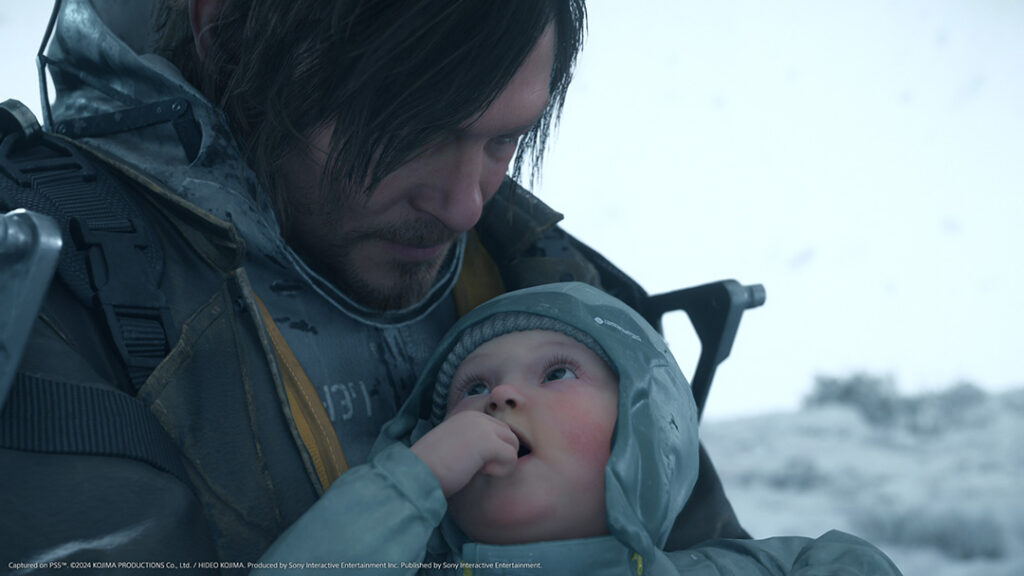
The People Among The People
The social commentary of this game doesn’t stop at the way we interact as people, or our place as a species. It also sheds a light on the way women and children are the target of men, even those who claim to be good ones. I was actually very positively surprised by some of the lines in this game, especially when Sam meets The Motherhood for the first time, and the harsh truth of it directly exposed to the player. The world of Death Stranding mirrors ours. In time of war, women and children are the first to suffer, not as collateral damage but as direct targets for all sorts of gratuitous violence. We see it everyday in the news, we’ve been saying it for decades. And this is one of the aspect of feminism in this game.
The most obvious aspect is the female characters. Not a single one is “useless”, written to be an accessory, or just to validate the hero. All the characters around Sam are here to validate and support him anyway, whatever their gender, there’s no role deserved to female characters, no specific little box where they’re supposed to look pretty and bat their lashes. Fragile (Léa Seydoux), Rainy (Shioli Kutsuna) and Tomorrow (Elle Fanning), all DOOMS sufferers, are their own characters, they’re part of the story and without them, some things wouldn’t even be possible. The story needs them.
Some criticism of the game portrays women as lacking real independence but women in Death Stranding are just living in the same world as ours: yes, women lack agency. Today, women are still sidelined, like it or not, this is the reality in our world too. Women are losing rights, women still die from the hands of the men they love, women are forced to carry a child that was forced into them with violence. THIS is reality, and Death Stranding 2 doesn’t shy away from it. Contrary to her name, Fragile is a strong woman. And strong doesn’t mean “be like a man”. She’s a woman with her own strength, she survived, she adapted, and she even created her own company, Drawbridge, to work on extending the chiral network. With Drawbridge, she becomes a sort of new BRIDGES, and she manages to have her hands in the future of the world.
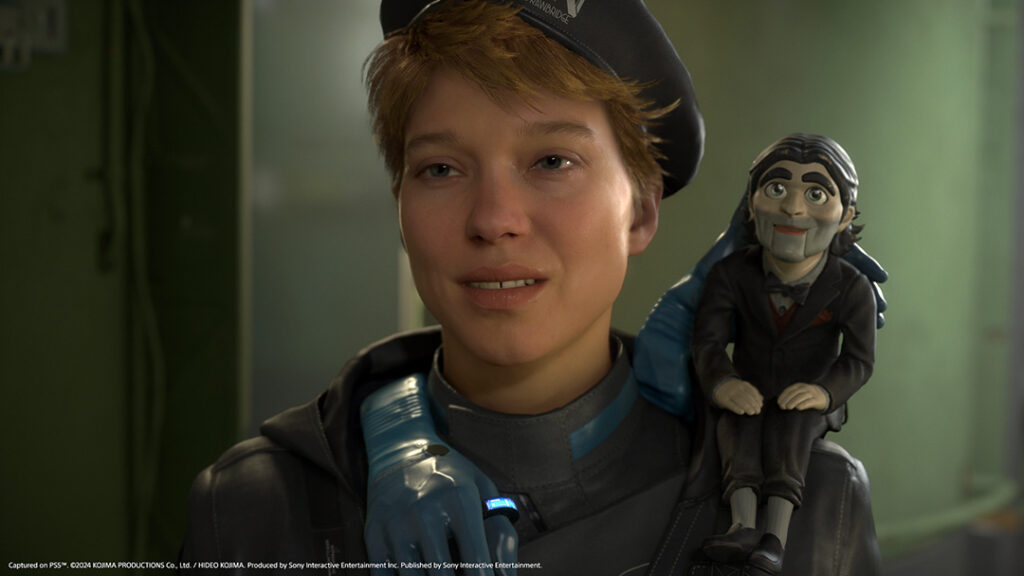
Rainy has a fantastic and unique power. While pregnant, she was chased from her community because of that. She had to survive in the wild alone until Fragile found her and convinced her to join Drawbridge. Her ability to invoke rain where and when she wants is crucial in a world where water can kill or save.
Tomorrow is yet another form of strength and power. Brought back from another dimension, she has the ability to dive into tar and travel through it to destroy basically anything by accelerating the passage of time of what she touches. And while she doesn’t look like it, she’s also physically very strong, rivaling with machines.
Lucy (Alyssa Jung), BB-28/Lou’s mother, is also a central character in the story. While less of an important one in the current events, she was at the origin of the whole Bridge Baby program even being possible thanks to the father being Sam, a repatriate, making this future child very unique. From this perspective, we also learn more about the Bridge Baby program, how it was first engineered. Pregnant Mexican women were smuggled over the border to serve as test subjects. These women had to be brain dead to be able to carry what would become a Bridge Baby, an unborn baby literally living between two worlds: the living and the dead. Brain dead women turned into living incubators… Doesn’t that remind you of anything? It’s so real it hurts. Kojima thought about the worst in a fictive world, but trust our very real world to turn the horror into reality.
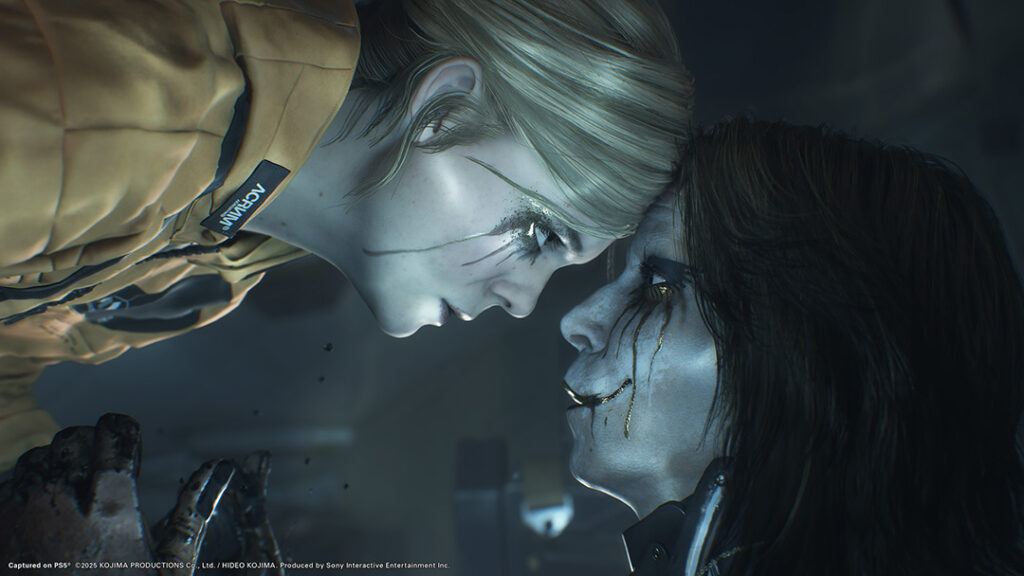
If you think it stops there, no it doesn’t. If violence against women is certainly highlighted, other social, and political, issues are addressed. Neil Vana (Luca Marinelli) was the porter used by the government to smuggle the pregnant Mexican women into the United States. We also learn that Neil was an illegal immigrant in the US, a convenient status to force him to do the dirty work of the government. Rings a bell? Yeah.
Keep On Keeping On, More Than Ever
Humans, animals, environment, war, love, friendship, family: Death Stranding 2 celebrates everything that makes us human and everything that makes this world. It’s about what unites us.
If you’re looking for competition, this is not the right game for you. The stats are made to show cooperation, not elimination. We gain our ranks by helping our world and other people, by building bridges, real or figurative, roads and monorails between places, means of transportation that can be used by any player. In the game, other porters benefits from all the infrastructure we build between refuges, which means more communication and exchanges, more interactions, more connections. In real life, we connect through the game with other players all over the world who also benefit from what we build in our game.
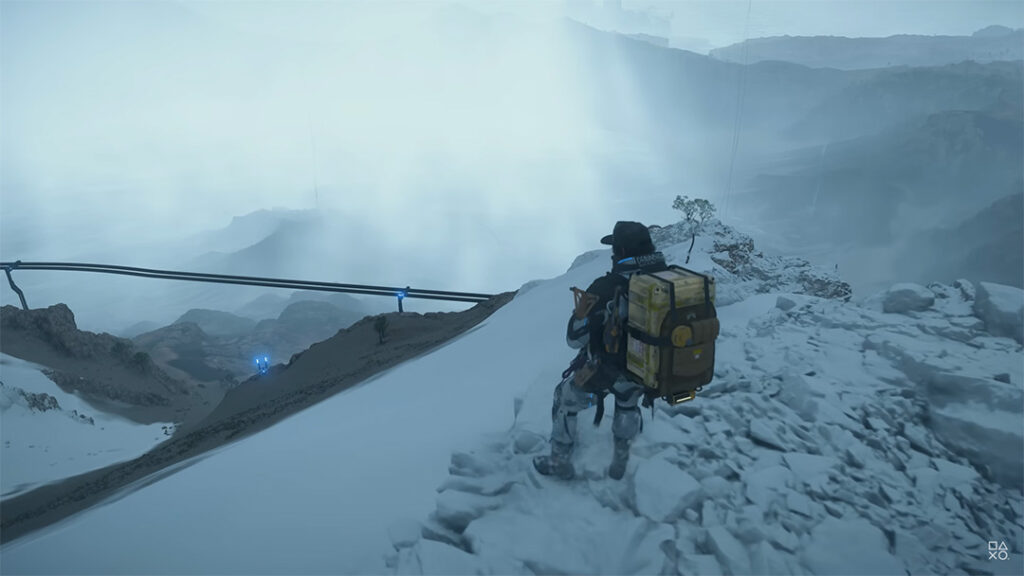
And mind you, violence is never lethal either, Death Stranding being decidedly an anti-violence franchise. Humans can’t be killed without risking creating a voidout, they can only be stunned. Death is never taken lightly, never easy, never trivial. It’s not a shortcut to peace either. Death Stranding celebrates life in all its aspects, even after death, and competition kills the aspect of interconnection between people and what they create.
It doesn’t mean the game doesn’t come with its challenges, but it’s not made to be the best, it’s made to be helpful.
Woodkid, One of The Greatest Additions To The Game
It’s also impossible to write about Death Stranding 2 without writing about the music. First because it’s everywhere, not only as a BGM but also as a diegetic element. While the music is part of the soundtrack, it is also included as a part of the game. Infrastructures we build like timefall shelters, generators, watchtowers, etc, can play music as we approach them. A music player can also be used to play the unlocked songs anytime during the game as a background music.
Ludvig Forssell is still composing the BGM and Woodkid composed several theme songs that punctuate the game. The first song we hear when we enter the gameplay is Minus Sixty One, a song Woodkid actually released in 2020, from his album S16. Was it already planned to be included in the game? One thing is sure, it suits the world of Death Stranding. Woodkid’s haunting voice and tunes support various moments of the story, from Any Love of Any Kind to Amekara Nijie or Asphalt Maelstrom.
There is more to say about this franchise and everything it tackles. Motherhood, fatherhood, love of all kinds, humans connections, the machine vs. the human, war and violence, all of this and more are part of the core of Death Stranding. What is still seen as an expensive walking simulator by people quick to judge is actually a deep social commentary on our society and a study of who we are as humans and what we create, sometimes against ourselves.
Hope is never lost, it’s carried by survivors willing to fight for life and freedom.
Death Stranding 2: On The Beach is available on PlayStation 5, released on June 26, 2025.

